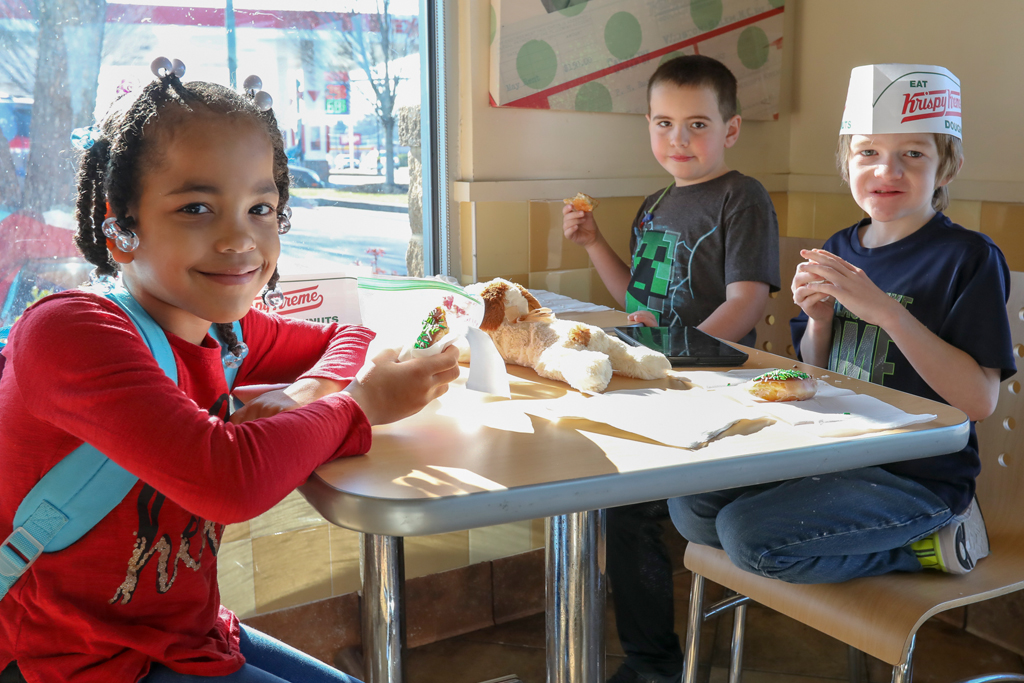Life Skills: A Vital Part of Autism Education

All children, including children with autism, can develop the essential life skills that equip them to live happy and fulfilled lives. With life skills, children learn how to care for themselves, interact with the world, and succeed at school, at home, and in the community.
At the Sarah Dooley Center for Autism, we believe that life skills are a vital part of autism education. That’s why we include life skills training and practice in our daily curriculum. We’re here to help your child achieve their full potential and successfully transition from school to adult life.
What Are Life Skills for Autism?
Also known as daily or independent living skills, life skills include an array of activities. Each activity enhances and supports your child’s ability to live as independently as possible and enjoy a happy and fulfilled life.
Consider the following summary of the various life skills children can learn.
1. Executive Functioning
Learn to make decisions, adopt flexible thinking, and transition between skills. Time management skills, such as planning the day, creating a to-do list, and prioritizing tasks, also fall under the executive function umbrella.
2. Practical Living
Become capable of managing everyday tasks. Examples include:
- Navigate the grocery store, doctor’s office, and other frequently visited locations
- Launder, organize, and buy clothing
- Shop for groceries and other items
- Care for a home by cleaning, cooking, shopping, and performing other chores
- Make change and manage money through budgeting, bank accounts, and credit cards
- Participate in leisure, hobby, and recreational activities
- Travel on various forms of transportation, read a map and road signs and plan a trip
- Find information via the internet, newspapers, books, and other sources
3. Personal Care
Maintain personal wellness and well-being by managing illnesses and coping with stress. Other personal care tasks could include following a hygiene routine, balancing nutritional needs, and exercising regularly.
4. Social Skills
Read social cues and body language, cultivate friendships, hold conversations, and ask for directions or help. Essential social skills include navigating conflict, talking on the phone, and exercising flexible thinking, too.
5. Communication
Gain confidence talking and communicating with others through verbal and nonverbal language.
Also, master assistive technology and functional communication tools, such as gesturing, visual aids, or sign language. Confidently use learned communication tools and skills at school and home, in social settings, and during interactions in the community.
6. Safety Skills
Identify common risks and avoidance strategies, and practice safe techniques. Safety skills can include understanding when to call 911, responding appropriately to storms and natural disasters, locking doors, following safety signs and street lights, and turning off the stove at home.
7. Job Skills
Develop skills that boost employability. In addition to hands-on work experience, know how to communicate with a manager, collaborate with coworkers and clients, and manage time.
8. Self-Advocacy
Encourage children with autism to first identify their needs and then discover ways to meet their needs effectively. Teach children how to make a list of people to approach for help and which questions to ask, plus how to take or ignore the advice.
The Importance of Life Skills for Children and Adults with Autism
Life skills help children function in everyday life. Life skills training makes it possible for your child to discover their value, live as independently as possible, and become a more fulfilled, contributing member of society when they reach adulthood.
Generally, children learn life skills from an early age. Parents start teaching their toddlers how to dress, help with household chores, and socialize with peers. As children age, they receive more training that builds on the skills they already possess. This scaffold training technique allows children to gain confidence, foster independence, and achieve personal fulfillment.
For children with autism, learning life skills is challenging. Each child has different cognitive, physical, and behavioral needs.
For example, one child may be able to dress themselves and use the bathroom alone from a young age while another child may need lifetime help with these tasks. Also, each child learns at a different pace. While one child may grasp safety concepts quickly, another may need repeated prompts.
A quality training program helps children with autism learn essential skills and overcome challenges. Specialized training builds on a child’s strengths and is based on an individual’s needs and goals. With skill and persistence, you can give your child the tools they need for success now and later in life.
What Life Skills for Autism Instruction and Practice Looks Like at SCDA
At SDCA, we understand how autism affects individuals, and we prioritize life skills training. Our trained professional teachers, therapists, and staff work with your child to create a life skills training program that meets their needs. Every class, therapy session, and leisure activity features training that equips your child for success.
Our staff begins life skills training with a diagnostic assessment. We meet with your child to determine their strengths and needs. Then we create a customized plan that’s broken into specific, actionable, objective and attainable goals.
Additionally, our program includes clear, hands-on instruction and plenty of practice in classrooms, social settings, the community, and natural environments. We rely on data-driven programming that features Applied Behavior Analysis best practices, such as positive reinforcement and step-by-step instruction.
The integrated programs we offer on the Villa’s 82-acre campus support your child in every way and include life skills for autism that are a vital part of their education. SDCA’s primary goals are to help students transition to their zoned public schools and realize their potential. Click below to learn how one SDCA student did just that!

